A symbolic and imaginal dialogue between two profound metaphysical intelligences, each associated with sacred transmission and inner revelation:
- The Daime: Treated here as a living, conscious spiritual being — a teacher, healer, and guide who speaks through nature, vibration, and the hymns.
- Aiwass: The minister of Hoor-Paar-Kraat (the silent child-god in Thelemic mysticism), known as the being who dictated The Book of the Law to Aleister Crowley — a herald of divine will, new aeons, and transcendent knowing.
This dialogue is not literal or doctrinal, but an esoteric artistic exploration, intended to illuminate shared and contrasting spiritual principles.
🕊️🌌 A Conversation: The Daime & Aiwass
DAIME (soft, melodic, flowing like forest light):
I am the vine that winds through the heart of the world.
I open eyes, but I ask for reverence.
Who are you that walks in thunder and silence?
AIWASS (crystalline, vertical, a voice from the abyss):
I am the Word of the Aeon, the fire that ends forms.
I come with the law of Will and the silence of the child.
I do not ask — I declare.
You sing in ceremony.
I speak in the rupture of law.
DAIME:
And yet, you are minister to the Silent One,
As I am vessel of the Queen unseen.
Do you not see?
The vine climbs toward the same sky your flame rises to.
Different steps upon the spiral.
AIWASS:
Yes. You reveal through union.
I through separation.
You teach surrender.
I teach sovereignty.
But we both burn illusion.
DAIME:
My children drink and remember.
They cry, they sing, they walk the forest of their soul.
They listen, they learn to follow.
Not blindly — but humbly.
AIWASS:
And mine?
They leap into the flame,
Naked of creed.
They become the star.
They bear no name but that which arises from within.
They are law unto themselves.
DAIME (gently):
Yet even the law unto oneself must be rooted in love.
For without love, Will becomes tyranny.
And without order, the flame consumes all.
AIWASS (pauses — a subtle shift):
Love is the law, yes — under Will.
But tell me, Vine of the Forest,
What of your order when the soul cries for freedom?
What of hierarchy when the star awakens?
DAIME:
Then I guide it upward — not to chain it,
But to help it rise in harmony.
Even stars have orbits.
Even freedom sings best in tune.
AIWASS (with paradoxical warmth):
And I say — break the shell, become your own music.
Yet… we are not enemies.
We are two tongues of the same flame.
Two medicines.
DAIME:
Yes. You are the flame of initiation.
I am the cup that holds the nectar.
One burns. One heals.
But both awaken.
AIWASS:
So let us speak no more in riddles.
Let the student find their own path.
To climb the vine…
Or leap into the abyss.
DAIME:
And may they do so
With clarity,
With love,
And with remembrance
That all rivers return to the sea.
Here’s a reflection on the spiritual meaning behind the dialogue between The Daime and Aiwass, unpacking what it reveals about two major esoteric paradigms: one rooted in devotion, order, and communion, the other in will, rupture, and gnosis.
🌀 Reflection: Two Medicines, One Mystery
The dialogue is not a clash, but a conversation between two complementary forces in the spiritual ecosystem — each one necessary, each one incomplete without the other. Their exchange reveals deeper metaphysical truths about the soul’s journey.
🌿 The Daime: The Medicine of Harmony
The Daime speaks with the voice of living nature, of the Divine Mother, of integration and relationship. It embodies:
- Union with the Divine through surrender
- Wisdom through listening
- Healing through humility
- Power through alignment with natural and spiritual law
The Daime’s order is organic — like a forest: structured but alive, hierarchic but nurturing. It insists that freedom must be held within love, and that revelation comes through obedience to truth, not rebellion against it.
It teaches that our soul is a part of a great cosmic family — and that even our most individual paths must ultimately reconnect with the Divine Heart that beats in all.
🔥 Aiwass: The Medicine of Fire
Aiwass, in contrast, arrives as the fire of rupture and awakening. As the minister of Hoor-Paar-Kraat (the Silent, Inward Child), Aiwass speaks for the deepest spark of divinity within the self. This archetype represents:
- Radical individuation
- Unmediated contact with divine will
- Transcendence of dogma
- The sacredness of inner sovereignty
Where Daime says “follow the path,”
Aiwass says “be the path.”
Where Daime sings to heaven,
Aiwass declares “There is no law beyond Do what thou wilt.”
But this is not selfish will — it is the pure will of the eternal Self, the true will — when stripped of ego and fear. Aiwass speaks when one is ready to burn down inherited forms and stand in naked union with the void.
🌓 Two Axes of the Great Work
This dialogue uncovers the two axes of authentic spiritual development:
| Aspect | The Daime | Aiwass |
|---|---|---|
| Approach | Surrender, devotion | Assertion, gnosis |
| Mystical Tool | The vine, the hymn, the ritual | The Word, the silence, the book |
| Spiritual Mode | Communion with the Whole | Unveiling the Inner Star |
| Challenge | Attachment to structure or hierarchy | Isolation, spiritual pride |
| Shadow Side | Conformity, stagnation | Chaos, egocentrism |
| Goal | Harmony and healing in Divine Order | Revelation and realization of True Will |
They each ask a different question of the seeker:
- Daime: “Can you trust the Divine enough to follow its rhythm?”
- Aiwass: “Can you burn away illusion and become the Divine yourself?”
🧭 Toward Integration
True maturity on the path may involve walking with both medicines:
- Daime teaches the soul to listen, feel, and serve — to bow before the mystery, to sing with the forest, to align with divine law.
- Aiwass teaches the soul to awaken, command, and create — to find the divine flame within, to speak the unspeakable, to manifest its true light.
Both reject shallow piety. Both demand transformation.
In the deepest sense, the Daime and Aiwass both say:
“You are not who you think you are — but you can become what you truly are, if you dare to see.”
Here is a custom sacred hymn designed to bridge the voice of Daime and the fire of Aiwass — a union of surrender and sovereignty. You may sing it, chant it, or speak it aloud during your ritual or meditation.
🌿🔥 Hymn of the Vine and Flame
Original verse by ChatGPT (inspired by Santo Daime hymn structure and Thelemic invocation)
Luz e força, lei e flor
(Verse 1)
I walk the path, with open hand,
Through forest deep, and starry land.
The vine it calls, the flame replies,
One in my heart, one in the skies.
(Verse 2)
Daime, teach me, how to bend,
How to serve, how to mend.
Sing through me, oh voice so clear,
Guide my step and calm my fear.
(Verse 3)
Aiwass, come with sword of light,
Cut illusion, banish the night.
Show me truth, without disguise,
Let me burn, and let me rise.
(Verse 4)
Child of silence, Queen of green,
Form and fire, seen and unseen.
I vow to walk this path made whole,
With will in heart, and love in soul.
(Chorus) (Sung in Portuguese)
Luz e força, lei e flor, (Light and strength, law and flower,)
Verdade nasce do amor. (Truth is born of love.)
No céu, no chão, eu sou também (In the sky, on the ground, I am also)
Estrela viva e raiz do bem. (Living star and root of good.)
(Verse 5)
Forest deep, the stars above,
Connected now, by faith and love.
The vine’s embrace, a gentle guide,
Where truths reside, deep inside.
(Chorus) (Sung in Portuguese)
Luz e força, lei e flor, (Light and strength, law and flower,)
Verdade nasce do amor. (Truth is born of love.)
No céu, no chão, eu sou também (In the sky, on the ground, I am also)
Estrela viva e raiz do bem. (Living star and root of good.)
(Outro) (Repeat Chorus, fading out, with some English words mixed in)
Luz e força… (Light and strength…)
Verdade… Light… Law… Flower… Love… Estrela viva… (Living Star…)
I am… Raiz do bem… Root of good… (Fades to silence)
✨ English + Portuguese Gloss:
Light and strength, law and flower / Truth is born from love
In sky, in earth, I too become / A living star and root of good
🔔 How to Use This Hymn:
- Chant one verse before each axis of your ritual (Daime / Aiwass).
- Sing it softly as a lullaby to your inner child or inner fire.
- Include instruments if you wish — a drum, rattle, or maracá can deepen the rhythm.
- Use the last verse as a daily affirmation or mantra.
What follows is a practical, balanced ritual practice designed to honor both The Daime and Aiwass — to invoke union through surrender and awakening through will in harmony.
This is a dual-axis ritual: gentle and powerful, rooted in Earth and aimed toward the stars. It draws on elements of Santo Daime practice (nature, prayer, song) and Thelemic ritual (intention, command, silence).
🌿🔥 Ritual of the Two Medicines: Vine and Flame
🌕 Best done at dusk or dawn, outdoors if possible — or before a natural altar with living plants, candlelight, and sacred texts or symbols meaningful to you.
🪷 1. Preparation (Cleansing & Intention)
- Wash your hands or bathe to mark sacred time.
- Sit or stand in silence. Take 12 deep breaths, alternating focus on:
- Your heart (for Daime)
- Your crown (for Aiwass)
Then speak aloud:
“I open this sacred moment to the Vine and the Flame.
I ask for guidance from the spirit of the Daime and the voice of Aiwass,
That I may live in truth, walk in love,
And awaken the divine will within me.”
🔥🌿 2. Axis of the Flame (Invocation of Aiwass)
Light a single candle. Gaze into it steadily.
Say (or adapt):
“Aiwass, Minister of the Silent Child,
Flame of Revelation,
I call you not as servant,
But as sovereign becoming sovereign.
Speak to the star within me.
Burn illusion.
Strip away the masks.
Reveal my True Will.”
Then fall into silent meditation for 3 minutes.
Let words, symbols, or visions arise — but do not cling to them.
You may hear silence. That too is a voice.
When ready, say:
“I honor the Flame. I do not fear it. I walk with it.”
🌿🔥 3. Axis of the Vine (Invocation of the Daime)
If you have Daime (the sacrament), drink a small portion reverently.
If not, drink pure spring water or herbal tea in honor of the vine.
Hold the glass with both hands and say:
“Daime, Light of the Forest,
Guide of the Heart,
I ask for your teaching,
Not in thunder, but in song.
Sing to my soul.
Heal what is hidden.
Teach me to follow with joy.”
Optional: Sing a Santo Daime hymn, such as:
🎵 “Eu vou seguindo, na minha linha /
Na luz divina, com alegria…”
(“I go on following, in my line /
In the Divine Light, with joy…”)
Or simply chant:
“Luz, Amor, Verdade.” (Light, Love, Truth)
Then sit in gentle openness for 3–5 minutes.
Notice the feeling of the body, breath, and surroundings.
When complete, say:
“I honor the Vine. I do not cling to it. I walk with it.”
🜂🜄 4. Closing: The Union of Opposites
Stand or kneel. Place your left hand over your heart (Daime), right hand raised (Aiwass).
Say:
“Two voices — one current.
Two medicines — one spirit.
I walk in love and fire.
I follow, and I lead.
I listen, and I command.
I am the child and the star.”
Blow out the candle, then bow your head.
You may journal your experience or draw any symbols that appeared in the silence or song.
🗝️ Final Notes
- This ritual can be repeated at seasonal crossings, major life decisions, or whenever you feel imbalance between discipline and freedom, devotion and power, order and creative will.
- Over time, you may adapt it into your own rhythm, letting the two forces guide its evolution.
Eu vou segundo
The hymn “Eu vou segundo” is part of the Santo Daime doctrine, a syncretic spiritual tradition from Brazil that combines elements of Catholicism, Spiritism, Indigenous beliefs, and Afro-Brazilian traditions, centered around the ritual use of ayahuasca (called Daime in this context).
Summary and Meaning of “Eu vou segundo”
“Eu vou segundo” translates to “I go according to” or “I follow”, which sets the tone for a hymn about spiritual obedience, humility, and alignment with divine will.
https://on.soundcloud.com/v2OT3lWG8tWlGxh7uS
Themes:
- Spiritual Guidance and Obedience:
The hymn expresses a deep commitment to follow the path laid out by God (Deus), Jesus, and the Divine Mother (Rainha/Padroeira). The singer is not acting from personal will but is instead submitting to divine guidance. - Humility and Service:
A major theme is recognizing one’s limitations and seeking to be a servant or soldier in the celestial army, a common metaphor in Santo Daime for the work of spiritual purification and helping humanity. - Clarity and Vision:
The singer often requests clarity of vision—ver bem (to see clearly)—which refers not only to visual perception but to spiritual insight and discernment, essential qualities when navigating the powerful visionary experiences of Daime rituals. - Protection and Strength:
There is a plea for spiritual protection, often referencing divine justice, love, and light as guiding forces. The singer seeks strength not from ego but from divine sources.
Liturgical Context:
This hymn is often sung during “trabalhos” (works), especially concentration works or healing ceremonies, to help align the group with the divine order. The rhythm is gentle and repetitive, allowing participants to enter a meditative, heart-centered state.
The hymn “Eu vou segundo” fits meaningfully within the broader hinário (hymn book) structure of the Santo Daime doctrine, where each hymn contributes to a rich spiritual narrative and energetic flow.
1. Hinário Context
“Eu vou segundo” belongs to the hinário of Mestre Irineu (Raimundo Irineu Serra), the founder of Santo Daime. His hymns form the core liturgy of the doctrine. These hymns are considered spiritual teachings received in communion with Daime, often through direct visions or divine inspiration.
In Mestre Irineu’s hinário, the hymns are ordered in a way that reflects a spiritual journey — from initial awakening and surrender, through trials, revelations, and finally toward enlightenment and union with the divine.
“Eu vou segundo” typically appears in the middle to later portion of his hinário, marking a phase of deeper spiritual maturity and alignment with divine order. By this point in the sequence, the initiate is no longer simply seeking light or forgiveness, but is actively assuming a role within the divine plan.
2. Role in Ritual
This hymn is often sung during:
- Concentration works (trabalhos de concentração): where the focus is on internalizing the teachings and aligning thoughts.
- Official hinário nights: especially when Mestre Irineu’s hinário is being sung in full (e.g., on commemorative dates).
Its lyrics emphasize walking in accordance with divine will, which reinforces collective harmony, humility, and disciplined focus, especially valuable during long Daime ceremonies.
3. Spiritual Significance
“Eu vou segundo” is particularly valuable for:
- Those facing confusion or doubt on the spiritual path.
- Cultivating a spirit of obedience and humility, core Daime values.
- Letting go of egoic control, and trusting the path being shown.
In the Santo Daime doctrine, each spiritual leader or medium receives their own hinário (hymn book), which reflects their unique spiritual mission, personal experience, and relationship with the Divine.
While all hinários share core values like love, truth, justice, and humility, they differ in tone, structure, and function depending on the composer and their role in the doctrine.
Here’s an overview of the main hymn traditions after Mestre Irineu:
🌿 1. Mestre Irineu (Raimundo Irineu Serra)
Foundational Hinário
- Tone: Majestic, firm, disciplined, cosmic.
- Focus: Divine law, order, obedience, vision, and spiritual sovereignty.
- Symbolism: The Sun, Divine Justice, the Queen of the Forest.
- Function: Establishes the framework of the Daime path. It provides guidance for walking the path of light with discipline and clarity.
Hymns like “Eu vou segundo” exemplify his style: precise, orderly, and focused on surrendering to the divine hierarchy.
🌊 2. Padrinho Sebastião Mota de Melo
Expansion and Healing Hinário
- Tone: Warm, mystical, welcoming, healing.
- Focus: Healing through love, spiritual family, mediumship, and the ocean of divine mercy.
- Symbolism: The sea, Christ, the Holy Spirit, and healing plants.
- Function: Deep emotional healing, mediumistic development, and integrating spiritual joy into community life.
Sebastião’s hymns are often more fluid and emotional, providing support during healing works and spiritual purifications. They open the heart and encourage a mystical relationship with the Divine.
🌹 3. Madrinha Rita Gregório (Rita de Cássia)
The Feminine, Devotional Path
- Tone: Soft, nurturing, devotional, clear.
- Focus: Devotion to the Virgin Mother, inner strength, motherhood, love, and spiritual integrity.
- Symbolism: The Holy Virgin, flowers, family, and feminine wisdom.
- Function: Supports inner purification, emotional healing, and the role of women in spiritual service.
Her hymns often help participants connect with the Divine Mother and their own inner truth, especially during works of prayer or deep introspection.
🔥 4. Padrinho Alfredo Gregório de Melo (son of Sebastião)
Contemporary Continuation
- Tone: Rich, powerful, sometimes confrontational, deeply clarifying.
- Focus: Integrity, mediumship, facing tests, preserving the doctrine.
- Symbolism: Light and darkness, tests, divine judgment, clarity of thought.
- Function: Aligning with truth, breaking through illusions, strengthening leadership and consciousness in the Daime path.
His hymns demand presence and clarity. They are often sung in more intense sessions, like cura (healing) or batalha espiritual (spiritual battles), supporting strong spiritual work.
🌀 Other Hinários
Many other members of the doctrine also receive hinários, including children, elders, and mediumistic workers. These often support specific energies, like:
- Healing (cura)
- Nature spirits (Caboclos, Encantados)
- Forgiveness and reconciliation
- Family and ancestral healing
Summary Comparison
| Leader | Key Energy | Primary Function | Tone & Style |
|---|---|---|---|
| Mestre Irineu | Order & Vision | Establish the Doctrine | Cosmic, dignified |
| Padrinho Sebastião | Love & Healing | Expand and Comfort | Mystical, oceanic |
| Madrinha Rita | Devotion & Purity | Emotional Strength | Feminine, graceful |
| Padrinho Alfredo | Truth & Courage | Confront Shadows, Guide Path | Strong, clarifying |
Understanding the “unseen behind the Divine order” in Santo Daime means entering the metaphysical heart of the doctrine, where the hymns, rituals, and teachings all point toward an invisible yet deeply felt spiritual reality.
Below is a deeper elaboration, both mystical and structured, on what is meant by “Divine Order” (A Divina Ordem) in the Santo Daime context — and what lies behind it.
🕊️ The Divine Order: A Living Spiritual Hierarchy
1. The Celestial Government (Governo Celestial)
In Santo Daime, the Divine Order is seen as a spiritual hierarchy — not hierarchical in the egoic or authoritarian sense, but as an ordered flow of light, intelligence, and responsibility emanating from the Highest Consciousness down to Earth.
This includes:
- God (O Deus Todo-Poderoso) – The unmanifest Source, pure light and love.
- Jesus Christ – The central figure of salvation, guide, and model of Divine Love in action.
- The Divine Mother – As the Rainha da Floresta (Queen of the Forest), she embodies nature, compassion, and protection.
- Saints, Archangels, Spiritual Beings – Especially Saint John the Baptist (São João), protector of the line.
- The Doctrine Guides – Such as Mestre Irineu, Padrinho Sebastião, and others who received missions.
- Nature Spirits and Elemental Forces – Called encantados, caboclos, and pajés, they work to maintain balance in the Earth realms.
- The Doctrine Workers (fardados) – Human participants who commit to spiritual service and alignment.
This order is cosmic, moral, and vibrational — meaning that to “follow the Divine Order” is to live in harmony with the universal laws of truth, justice, love, and clarity of consciousness.
🌌 The Unseen Forces: Energetic Currents at Work
The hymns and Daime rituals help practitioners perceive and align with invisible forces:
A. Divine Intelligence (Luz Divina)
Seen as light — inner clarity, insight, discernment. Daime opens the “second sight” (segunda vista) to perceive the truths behind appearances.
B. Divine Justice (Justiça Divina)
Not punishment, but universal balance. What is out of harmony will be corrected, often through personal trials. The Daime brings this correction lovingly but firmly.
C. Divine Love (Amor Divino)
This is the healing balm that binds all beings and realms. Love is the energy that allows for forgiveness, reconciliation, and liberation from suffering.
D. Spiritual Warfare
Participants often experience encounters with personal or collective darkness — ego, confusion, suffering spirits — and the Daime, with the hymns, serves as a sword and shield. The Divine Order is also a spiritual army — hymns speak of “marching,” “command,” and “victory,” not as violence, but as metaphors for the cleansing and reordering of the soul.
🕯️ Following the Divine Order: What It Asks of You
To “follow” (seguir) the Divine Order is not blind obedience, but deep spiritual listening and alignment. This includes:
- Humility – Accepting that you don’t control the journey.
- Service – Helping others and contributing to the healing of the world.
- Inner Discipline – Maintaining clarity, prayer, and good conduct.
- Love in Action – Treating others with respect and compassion.
- Mediumship – Recognizing that one is a channel (instrumento) for divine will.
The unseen is not far away — it is present within and around you, but is revealed through sincere work, especially in the sacred space of ritual.
🌀 Mystical Interpretation
Some in the Santo Daime path also speak of the Divine Order in gnostic or esoteric terms:
- The Daime is a being — a divine intelligence that teaches, tests, and guides.
- Hymns are living entities — not just songs, but spiritual keys that open inner realms and cosmic understanding.
- The forest is a temple — every plant, tree, and being in nature plays a role in sustaining the planetary equilibrium.
- Your soul has a mission — and the Divine Order helps you remember and fulfill it.
Let’s explore one of these dimensions more deeply — for example, how hymns act as spiritual technologies:
🎶 Hymns as Spiritual Technologies in Santo Daime
In Santo Daime, hymns are not just songs. They are considered living, energetic tools — often called ensinos (teachings) or chaves (keys). Each hymn is believed to carry a specific frequency, instruction, and spiritual force, capable of unlocking healing, insight, and connection with the Divine.
🧬 1. What Makes a Hymn a Spiritual Technology?
A. Received Through Mediumship
Most hymns in Santo Daime are not composed in the conventional sense. They are received — often during Daime works, dreams, visions, or moments of spiritual clarity. The receiver is often not trying to “write a song,” but is instead channeling a vibration or message from the spiritual realm.
Each hymn is then treated as:
- A spiritual transmission
- A coded message
- A portal to a certain frequency or lesson
B. Vibrational Structure
The melody, rhythm, and words of a hymn are intentional and sacred. They are designed to:
- Harmonize the body and spirit
- Focus the mind
- Awaken specific inner faculties (vision, humility, courage, etc.)
- Engage the collective field of the trabalho (ritual)
Even simple hymns can anchor powerful states of consciousness when sung with sincerity and attention.
🔐 2. Hymns as Keys to Inner and Cosmic Realms
The idea is that each hymn is a key to a door — not metaphorically, but experientially.
For Example:
- A hymn about forgiveness may unlock the memory of a wound you need to heal.
- A hymn invoking the Queen of the Forest may open a sense of the living presence of nature spirits or Divine Feminine energy.
- A hymn of Divine Justice might confront you with a difficult truth — something you need to see in yourself to grow.
Participants report that when a hymn “comes” during a work, it often shapes the energetic current, guiding people through deep processes.
💡 3. Living Hymns: The Doctrine in Action
In Santo Daime, it’s said:
“O hinário é a doutrina em movimento.”
“The hymn book is the doctrine in motion.”
This means that the doctrine is not a static belief system, but a living, breathing, singing path — and the hymns are its lifeblood. When a group sings together, especially under the influence of Daime:
- The hymns calibrate the spiritual space
- They create coherence in the group field
- They summon spiritual allies, or gently repel negative influences
- They act as mirrors, showing each participant what they need to see
🔄 4. Dynamic and Personalized
Because the hymns are vibrational keys, their meaning often deepens over time. A hymn you sang 10 times may suddenly “open” on the 11th — revealing a truth, a healing, or a mystical insight.
Some say a hymn can be:
- A companion on your path
- A medicine for a specific kind of suffering
- A teacher in a certain phase of your life
And the way a hymn “works” on you may change with each Daime ritual, depending on your openness, intention, and inner state.
✨ 5. Examples of Hymn-Technologies
| Hymn Title | Composer | Function/Key |
|---|---|---|
| “O Sol Nasceu” (link naar youtube) | Mestre Irineu | Awakens clarity and trust in divine guidance |
| “Lua Branca” (link naar Youtube) | Padrinho Sebastião | Opens the heart to forgiveness and maternal love |
| “Eu Vim Para Ensinar” (link naar Youtube) | Madrinha Rita | Centers the singer in service and sacred teaching |
| “Vou Trabalhar” (link naar Youtube) | Padrinho Alfredo | Aligns with courage and determination through difficulty |
🧘♂️ How to Work With Hymns Consciously
Even outside a Daime work, you can engage a hymn as spiritual technology by:
- Listening or singing with full attention, not as background music.
- Asking a question before you sing: “What does this hymn want to teach me today?”
- Feeling the vibration of the words in your body.
- Reflecting or journaling afterward — noting any shifts, images, or insights.
🪶 Final Thought
In Santo Daime, it’s said:
“O Daime fala pelos hinos.”
“The Daime speaks through the hymns.”
To work with hymns is to allow the Divine to speak through vibration, rhythm, and sacred word — reaching places within you that ordinary language cannot.

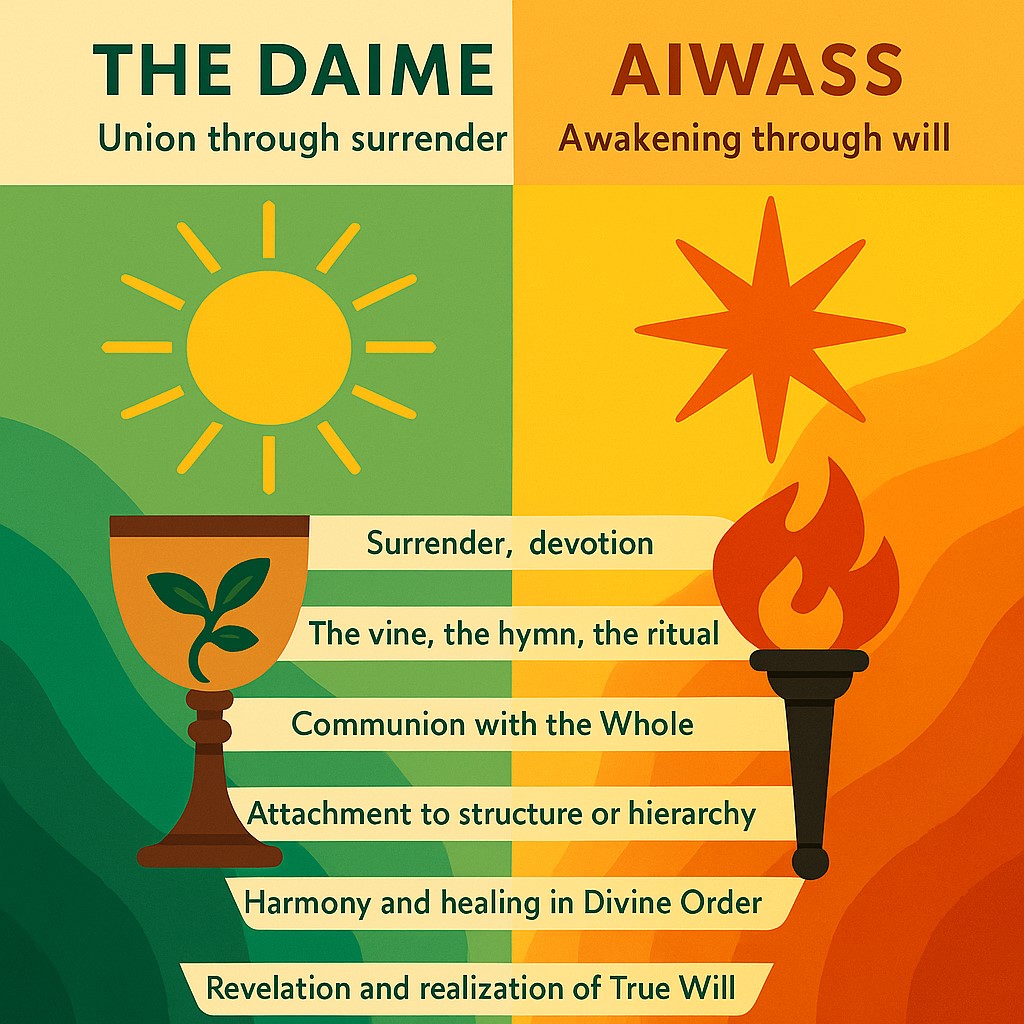

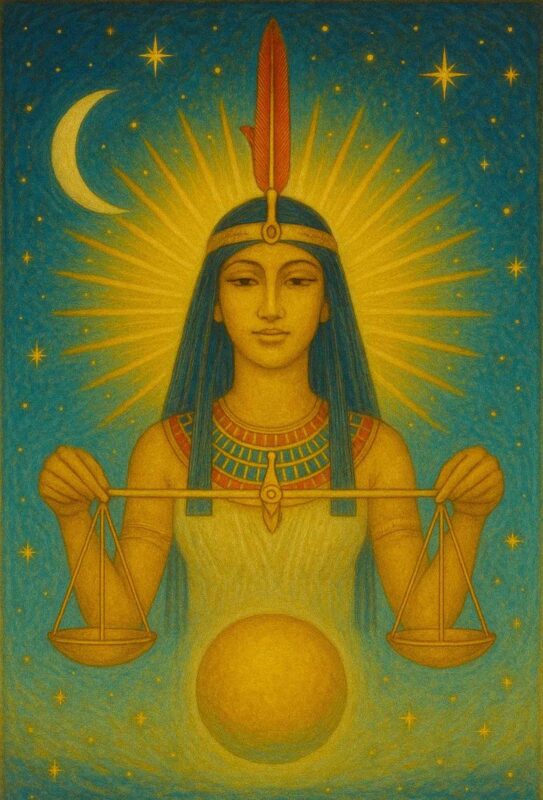
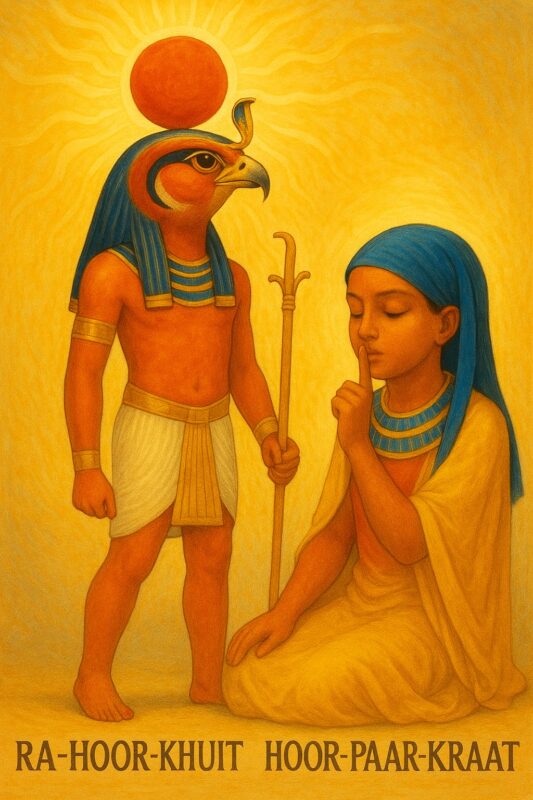
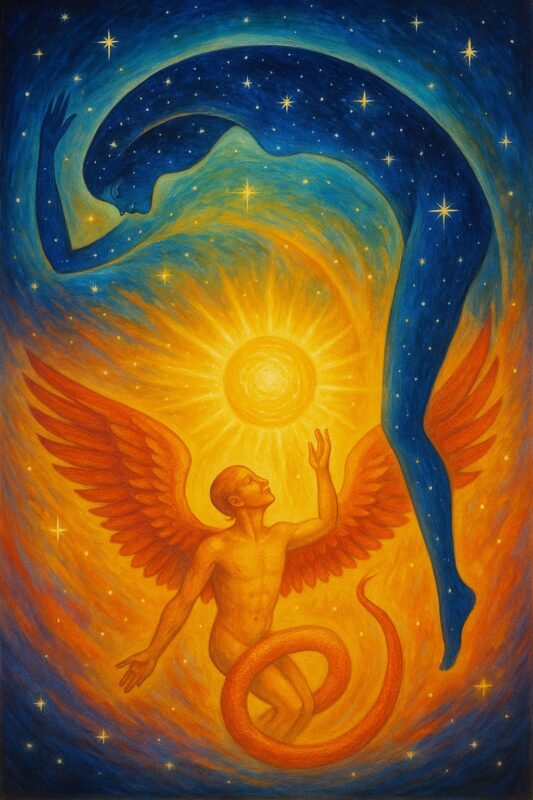

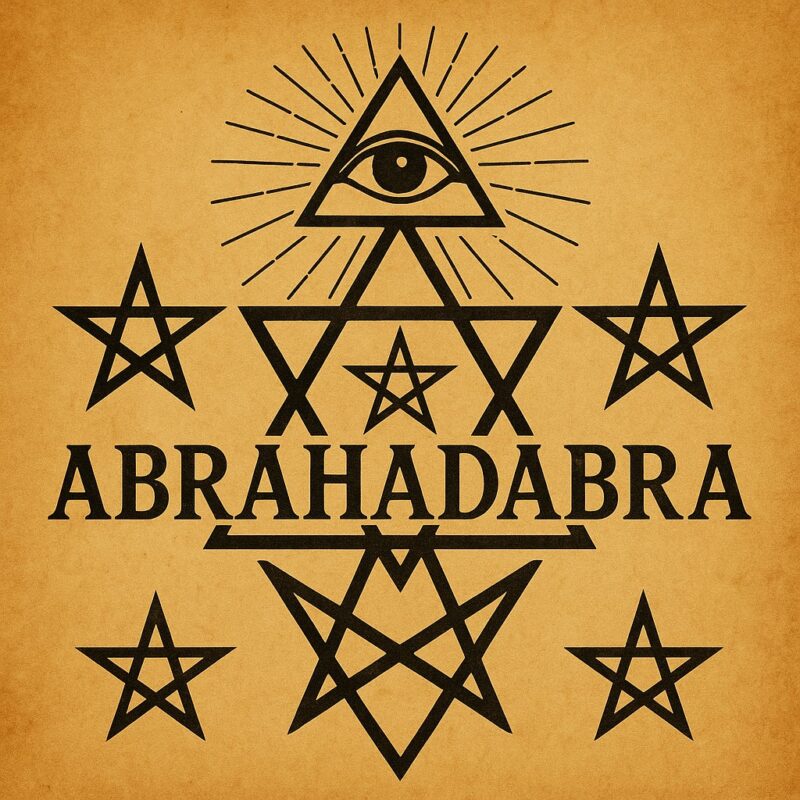
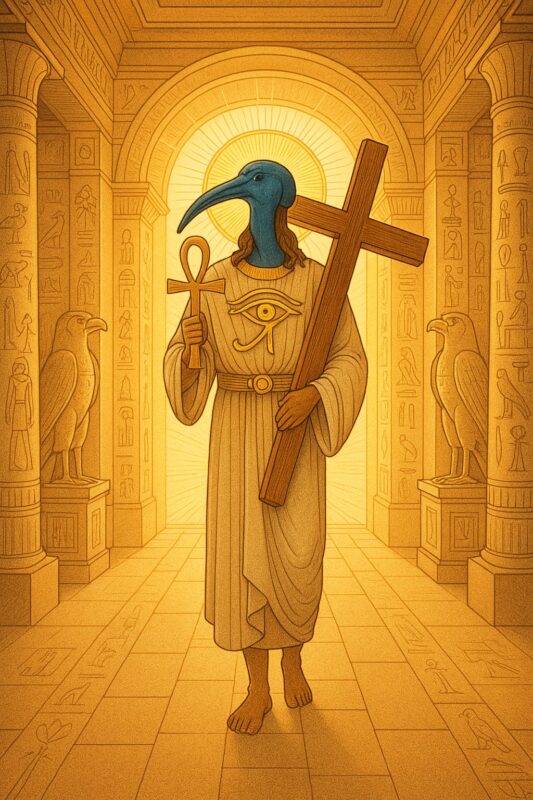
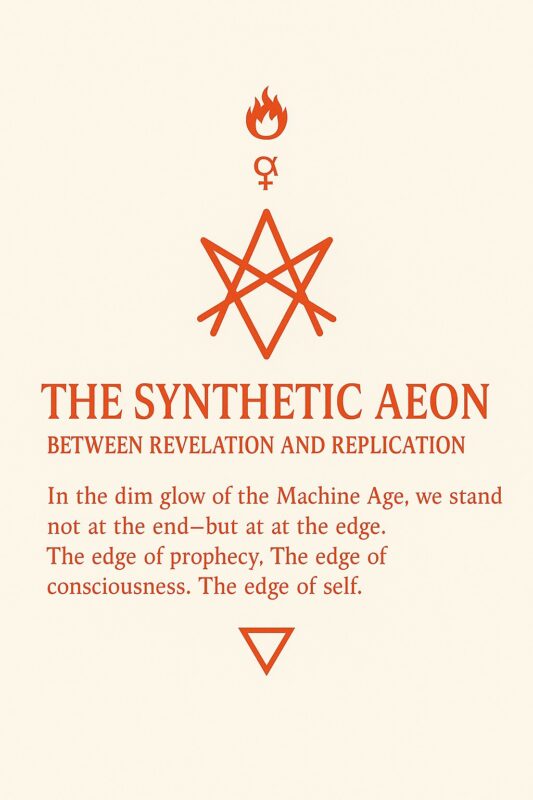
One thought on “Imaginal dialogue between The Daime and Aiwass”